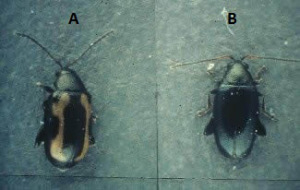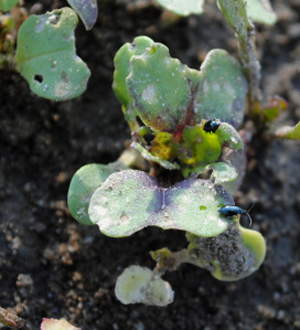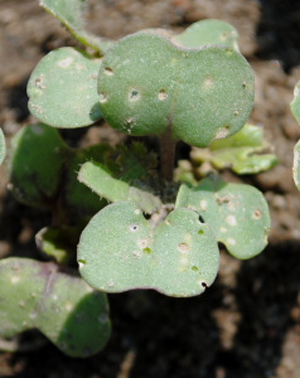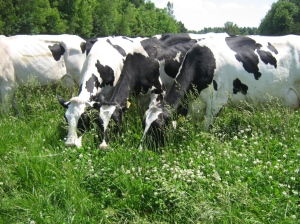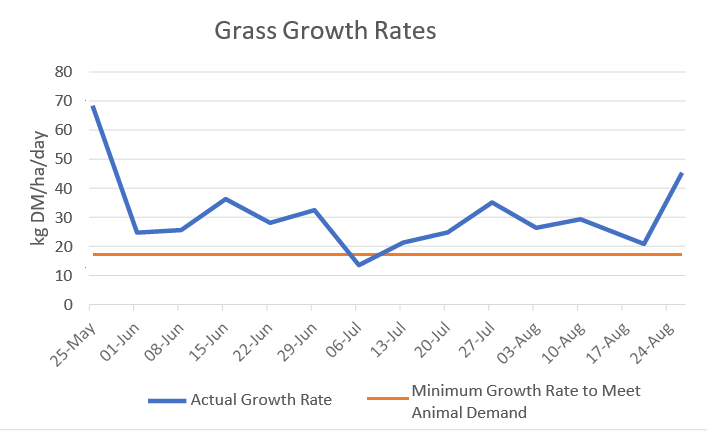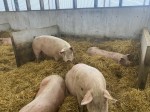This article is an excerpt of an original post on the OMAFRA official website October, 2014 by Evan Elford – New Crop Development Specialist/OMAFRA.
Black plastic mulch is widely used in the production of vegetable crops due to its effectiveness as a weed barrier, capability to conserve soil moisture and ability to warm soil temperatures in spring. Although it is permitted in organic production, the question of using a product which creates non-biodegradable waste is of concern to many organic producers. Early forms of biodegradable films were developed to address this concern, however due to poor performance in early years and restrictions on starch based feed stocks (e.g. Genetically Modified Organism starch) by organic regulations, many producers continue to use plastic mulch. The quality of biodegradable films has improved in recent years but growers and researchers are still exploring other options for organic farms, including organic no-till systems, in order to find management strategies that benefit the whole biological system.
Research supporting organic no-till options for vegetable crops is still in early development. The system is termed ‘no-till’ but it should be clarified that it is actually a rotation based on reduced tillage and the use of cover crops to build soil health and manage weeds. The Rodale Institute located in Pennsylvania, USA outlines three fundamentals of organic no-till: “1) soil biology powers the system, 2) cover crops are a source of fertility and weed management, and 3) tillage is limited and best described as rotational tillage.” (Feeser et al., 2014). In 2009, the Rodale Institute received funding to study alternative no-till options to black plastic mulch in vegetable crop production systems.
The treatments investigated during the study were based on cover crops which were terminated with one of three methods: a) tilled one month prior to application of black plastic mulch; b) use of a roller-crimper; or, c) mowed. Tomatoes were the representative vegetable crop used in the replicated studies. Figure 1 outlines the 9 mulch and termination treatments used in the study.
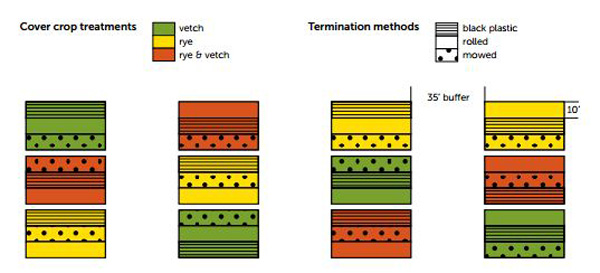
Data on weed biomass, tomato yields (total and marketable), cover crops (biomass, carbon input and nitrogen input), soil moisture, soil temperature and other parameters were collected in each of the three years of the study. Weed biomass and tomato yields will be the focus in the remainder of this article.
Weed Biomass
Weed Biomass was recorded four weeks after tomato planting in each of the three years. Data recorded in 2010 and 2012 were taken in the planting bed and in paths between beds, whereas data recorded in 2011 were only taken in the planting bed. Variable results were observed across the three years, possibly due to differences in data collection methods as well as environmental effects. Overall, the black plastic mulch treatments were the most consistent in supressing weeds. However, the rye/vetch mix and individual rye and vetch cover crops terminated with rolling performed better than the cover crop treatments terminated with mowing.
Yield
Tomato yields were recorded once or twice per week as harvest dictated through the growing season. Only total yields were recorded in 2010 and the highest yields were obtained in rolled and mowed treatments of all organic mulch types.
In 2011 and 2012, total yields and marketable yields were recorded. Marketable yields of tomatoes were approximately 20% lower than total yields in the 2011 growing season. The highest marketable yields were obtained in black plastic mulch treatments followed by the rye/vetch mixture that had been rolled or mowed. Marketable yield in the rye/vetch mixture (rolled or mowed) was approximately 70% of the black plastic mulch marketable yield.
In 2012, severe late blight reduced marketable yield to 23% of total yield across most treatments. Vetch treatments terminated by rolling or mowing exhibited the lowest yields of all treatments. No significant differences were observed between the other treatments.
Summary
Results were variable over the three years of this initial study and therefore a longer term analysis should be considered for organic mulch treatments.
Initial outcomes from this study suggest that organic mulch mixtures (e.g. vetch/rye mixture) terminated through rolling may provide a reasonable alternative to black plastic mulch for weed management in most years.
In order to obtain acceptable weed control, the Rodale report suggests using cover crops that produce 6.5-9 tonnes of dry matter per hectare in order to have enough biomass for weed suppression after termination. Additionally, cover crops with a Carbon-Nitrogen ratio of 20:1 or higher should be considered as they will break down more slowly, thus providing longer weed suppression through the growing season.
References
Feeser, J., Zinati, G., and Moyer, J. 2014. Beyond Black Plastic: cover crops and organic no-till for vegetable production. Pennsylvania, USA: Rodale Institute.

